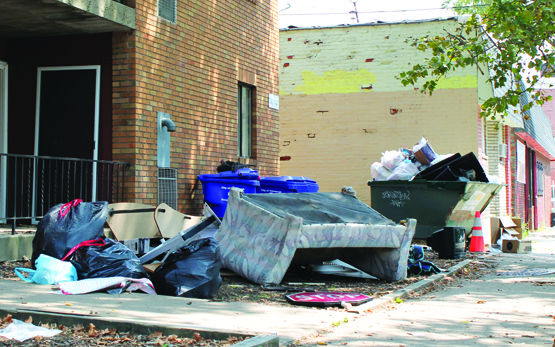Welcome Back: A step-by-step guide to fill an apartment the affordable way

August 19, 2014
Signing the lease on your first apartment can be a thrilling and completely new experience. But once the deed is done, you might be left wondering how to furnish an apartment on a college student’s meager budget.
On a grand scale, furnishing an entire apartment requires a lot of time and even more money. Luckily, if you do it right, there are ways to avoid overspending without jeopardizing your style.
Accept that your apartment probably won’t look like something on HGTV, but it can look pretty close to a place on TLC.
Step 1:
Plan, organize and share ideas
Start the planning process as early as you can. It’s essential to maximizing your apartment’s — and your wallet’s — potential.
First, create a spreadsheet of everything you’ll need. Sort it any way you like, but do it in a way that lets you note what you still need to get and what you already have. If you have roommates, shared Google Docs work well because you’ll all have the ability to share ideas.
Another way to collaborate with roommates is to create a Pinterest board. You can use it for inspiration before the spending even starts, or to document everything you’ve bought so far. Much like with Google Docs, everyone can contribute to the decorating.
Step 2:
Find DIY Projects
Next, figure out what you can create, fix or build yourself.
Do-it-yourself projects are an important part of furnishing your first apartment. For example, instead of buying a new table and paying an obscene amount of money, buy a used one and then sand and re-stain it for a fraction of the price. Don’t be afraid of a fixer-upper or doing a project from scratch, because you won’t have to do them alone — that’s why YouTube tutorials exist.
Apartment DIYs are also easy to come across on Pinterest — there’s a “DIY and Crafts” category on the home page, as well as a “Home Décor” category. You’ll find simple, money-saving ways to add character to your space and learn valuable tricks through step-by-step, photographed instructions.
Keep in mind that DIY is valuable for large pieces of furniture as well as small room accessories. Simple accents like wall art, fun paint colors and thematic decorations can turn your space into a place you’re proud of — for minimal cost.
Step 3:
Obtain Secondhand Furniture
Save for a few exceptions, you probably won’t need to buy anything new. For used items, locals who sell furniture on social media or advertising websites are an excellent resource. You may find excellent prices if someone wants to get rid of furniture quickly. Plus, sometimes you can haggle.
Haggling is also great for flea markets, which are just as valuable as online listings, though not as easy to navigate. But you could end up finding a lot of quirky household commodities you wouldn’t find anywhere else. The Strip District Flea Market, for example, is filled with local treasures and is only a 10-minute drive from campus.
Additionally, secondhand retail stores are a great place to browse for smaller housewares. Goodwill is located in SouthSide Works and can be easily accessed by car or Port Authority bus.
Also try looking for household items in your relatives’ and friends’ basements and attics. Find out what they don’t need anymore and score some free goodies for your space. Put a dust cover over Grandma’s old armchair, and it’s as good as new.
Step 4:
Buy new furniture if necessary
Lastly, if all else fails, lower quality or surplus retailers should be your go-to for all other things to fill up your apartment. Places like IKEA and Big Lots are fairly priced and their products are stylishly appropriate for the modern college student who is looking to save some cents.







